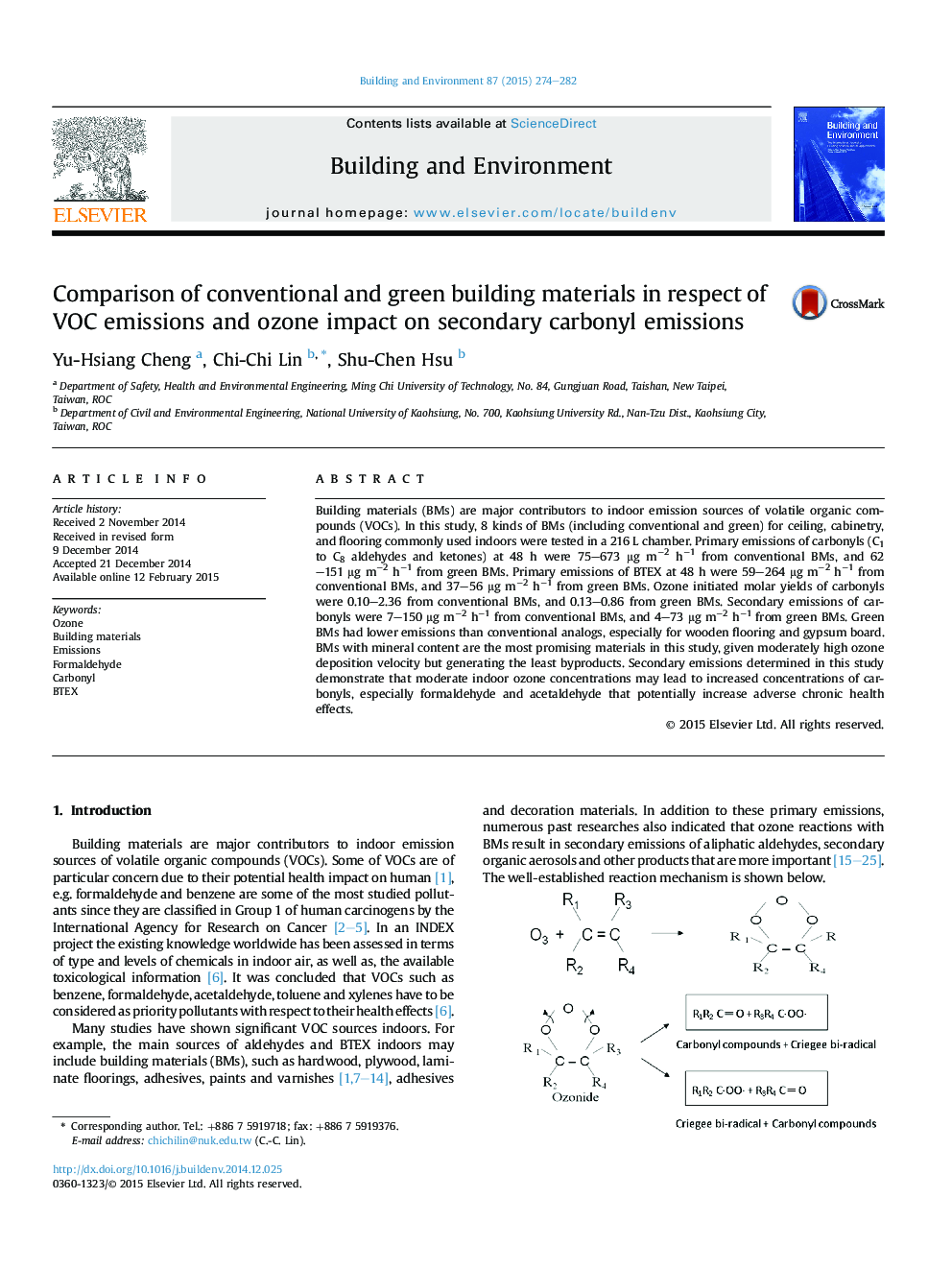| کد مقاله | کد نشریه | سال انتشار | مقاله انگلیسی | نسخه تمام متن |
|---|---|---|---|---|
| 248039 | 502540 | 2015 | 9 صفحه PDF | دانلود رایگان |

• Green BMs had lower emissions than conventional analogs.
• Moderate indoor ozone may result in increased concentrations of carbonyls.
• BMs with mineral content are the most promising material in this study.
• Fleecy texture exhibit higher ozone reaction than smooth surfaces.
• Ozone interactions with BMs are needed in testing protocol.
Building materials (BMs) are major contributors to indoor emission sources of volatile organic compounds (VOCs). In this study, 8 kinds of BMs (including conventional and green) for ceiling, cabinetry, and flooring commonly used indoors were tested in a 216 L chamber. Primary emissions of carbonyls (C1 to C8 aldehydes and ketones) at 48 h were 75–673 μg m−2 h−1 from conventional BMs, and 62–151 μg m−2 h−1 from green BMs. Primary emissions of BTEX at 48 h were 59–264 μg m−2 h−1 from conventional BMs, and 37–56 μg m−2 h−1 from green BMs. Ozone initiated molar yields of carbonyls were 0.10–2.36 from conventional BMs, and 0.13–0.86 from green BMs. Secondary emissions of carbonyls were 7–150 μg m−2 h−1 from conventional BMs, and 4–73 μg m−2 h−1 from green BMs. Green BMs had lower emissions than conventional analogs, especially for wooden flooring and gypsum board. BMs with mineral content are the most promising materials in this study, given moderately high ozone deposition velocity but generating the least byproducts. Secondary emissions determined in this study demonstrate that moderate indoor ozone concentrations may lead to increased concentrations of carbonyls, especially formaldehyde and acetaldehyde that potentially increase adverse chronic health effects.
Journal: Building and Environment - Volume 87, May 2015, Pages 274–282